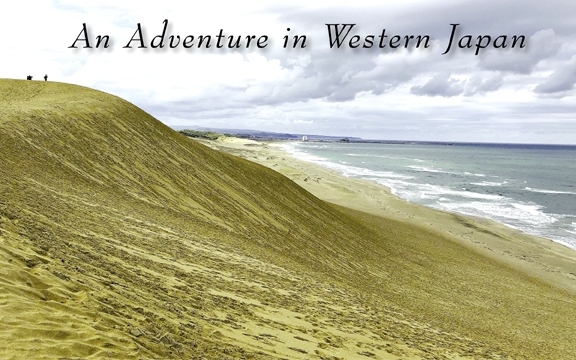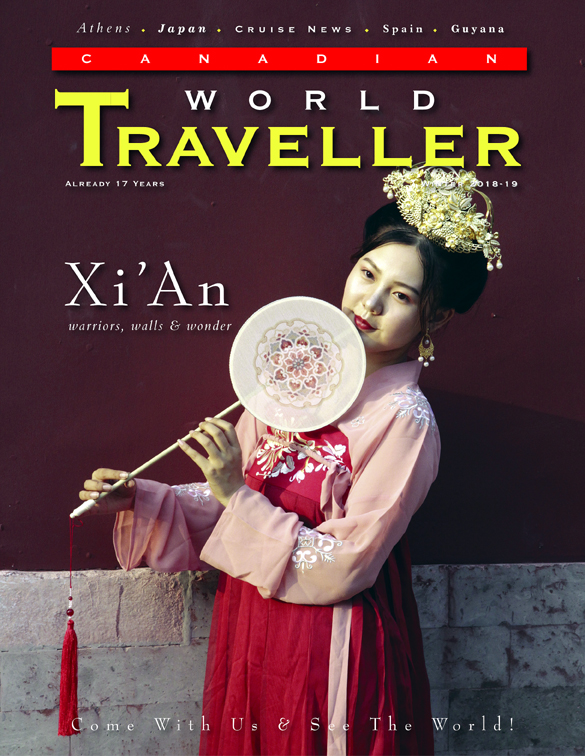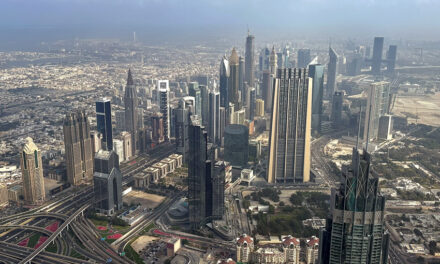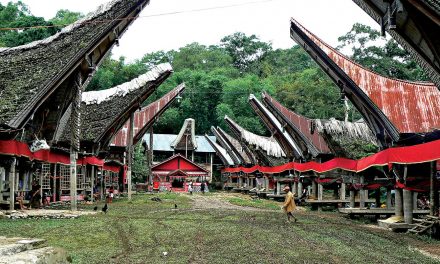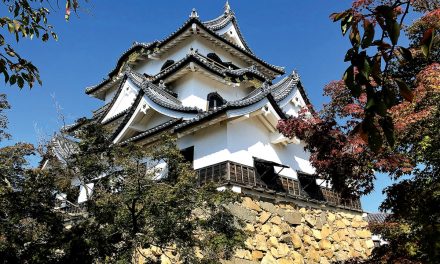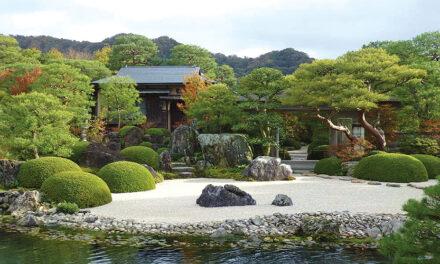Japan
An Adventure in Western Japan
Article and photography by Steve Gillick

Certainly one of the joys of re-visiting Japan is that on each successive trip (this was my 18th visit) there are still so many amazing places to discover. On our latest quest in the West, we encountered both Heaven, in Izumo – the dwelling of the gods, and Hell in Kannawa – in the hot springs, called ‘Jigoku’. But throughout our adventure in Western Japan, it was the small towns, natural attractions, shrines, local personalities, accommodations and food that made just about every moment of the eight-day journey, ‘pop’ with excitement, energy and enthusiasm.
It all began with a one hour flight from Tokyo’s Haneda Airport to the city of Tottori, where we immediately set out to visit the famous sand dunes. The first views were captivating as before us lay a large, flat plain with one large dune, about 50 meters high, on which a procession of people were slowly climbing the ankle deep sand. We ignored the signs pointing to the chair lift and the camel rides, as we wanted to experience this national, natural treasure first hand. We trudged over to the dune and then up to the top where, with dramatic grey clouds overhead, the scenery of the coast and the Sea of Japan was a notch above spectacular. And for the next hour or so we took photos of the coast, the dunes, the tourists, the colourful hang gliders and even the camels, as well as taking time to just sit in the sand, listen to the waves and feel the breeze. Quite the experience!
And with the Sea of Japan top-of mind, we headed to the Karoichi Market. The stalls specialize in selling Beni Zuwai Gani (red Snow crabs) and huge squid, one of which was just short of a meter long and selling for roughly $89.00 U.S. In the grocery section, there were bags of cherry tomatoes next to Tottori’s famous, sweet shinko-nashi pears.
For lunch we went to Karokou and enjoyed Kaisen Don, a large bowl of delicious, fresh, assorted seafood on a bed of rice, with Miso soup and pickles on the side.
The next morning, bright and early we were on the road again, or more accurately, the rails, as we used our Japan Rail Passes to continue westward to the city of Izumo in Shimane Prefecture. Our first stop was the Izumo Taisha Shrine, one the earliest Shinto Shrines in the country. And similar to most Shrines, a Torii gate marks the entrance to the sacred area, followed by a walkway through a long forested path. The main structure, only accessible with special permission or through Imperiall lineage, is characterized by ‘chigi’, large scissor-like structures on the roof, used as a building support technique. Nearby, Kagura Hall features the largest sacred straw rope (shimenawa) in the country, reportedly weighing 5 tons. And throughout the Shrine, the trees are covered in ‘omikuji’, white pieces of paper on which wishes and hopes for good luck, good jobs, and good relationships are written, and left to be answered by the Kami, the Shinto spirits.
Back in Izumo, we visited Asahi Shuzo Sake Brewery and chatted with Eriko Terrada. She explained that she began her career as an apprentice and is now the Sake Maker, not only developing new varieties using different sake rices, but also designing the labels. Samples of the products only added to this enjoyable encounter.
A short train ride took us to Tamatsukuri Onsen, a hot spring town where we spent the night at the Hoshino Resorts Kai Izumo, a boutique ryokan (Japanese Inn) that included gardens, tatami rooms, hot baths, sake tasting and for dinner, tasty local dishes. The word ‘Izumo’ relates to the heavens. So it was fitting that the evening theatrical performance told the tale of a god slaying an evil serpent in order to spare the daughter of an elderly couple. Afterward the god and the daughter married, and one of their ancestors is said to be enshrined at the Izumo Taisha Shrine. No wonder they call this area ‘the dwelling of the gods’.
And with ‘heavenly’ thoughts in mind, it was only natural for our next westward destination to be Beppu in Oita Prefecture on the island of Kyushu. We bought one day bus passes and headed to Kannawa to see the hot springs and geysers. The town itself is a great place to wander, with free steamy foot baths, restaurants where you put on heavy duty gloves and steam your own dishes, shrines where you can drink pure spring water for good health and good luck, and numerous hot baths where, for a small fee, you can soak to your heart’s content.
But the main tourist area consists of five sites (with another two sites, a short bus ride away). It was ironic that we came to Beppu to experience the heavenly hot springs in our hotel (which we did several times a day) but that we were also exposed to Hell!
The Kannawa area is actually referred to as ‘Jigoku’ or ‘Hell’ and statues of Oni (evil demons that somehow look kind of friendly) are there to create that underworld feeling. Get ready for steaming vents, bubbling mud and great photo and selfie opportunities, along with hot springs with names such as Cooking Pot Hell, Oniyama Hell (where they breed crocodiles), White Pond Hell (white boiling waters), Blood Pond Hell (due to the red-colored clay) and Geyser Hell (where the hot spring erupts regularly every 40 minutes). It was a fun and fascinating day.
Once again we took the train westward to visit the city of Kumamoto. We took a local bus outside the city and got off at the base of Mt. Kimpo, amidst a beautiful landscape of rice terraces, orange orchards and fire-red maple trees. Our destination was Reigando, the cave where the great 17th century swordsman, Miyamoto Musashi spent his final years composing The Book of Five Rings, a treatise on swordsmanship and tactics. I had read Musashi’s biography and seen the 1954 movie about his life, so this was a bit of a personal pilgrimage. First you encounter the Five-Hundred Rakan Buddha Images. These are stone statues of disciples of the Buddha and were carved by a man and his son at the end of the 1700’s. And just beyond is the cave. You ascend stairs to find an alter and some signage paying tribute to Musashi. Outside the cave all you can see are trees and all you hear are birds. It’s a very peaceful, meditative place.
However, variety is the spice of life so in total contrast to our peaceful pilgrimage, we travelled north to Fukuoka City where we attended the November Grand Tournament of Sumo wrestling. What a hoot! In a carnival-like atmosphere, there are colourful banners and souvenir stalls selling snacks and drinks along with Sumo souvenirs. In the stadium stands, people were cheering loudly for their favourite wrestlers and holding up signs to encourage them. We spent four hours watching the wrestlers parade into the ring, do their leg stomps, slap their bodies and then engage in combat for a period that ranged from several seconds to several minutes. It was 400 pounds of great fun, repeated over and over.
We used our Japan Rail Pass one last time for the return journey to Tokyo. This was a memorable trip. On most evenings we stayed in conveniently located business hotels, and every evening we tried a new izakaya for dinner, enjoying a delicious variety of food that ranged from deep-fried Fugu and Oysters, to yakitori, soba, sashimi and cod roe. And in each city we drank the local sakes, to truly get a flavour of the destination.
Many travelers visit Tokyo and Osaka on their first visit to Japan, but there so much more to experience on successive visits. In our case we ran the gamut from Heaven to Hell and had an exceptional time doing it!
www.ilovejapan.ca
Click on cover to view published article

